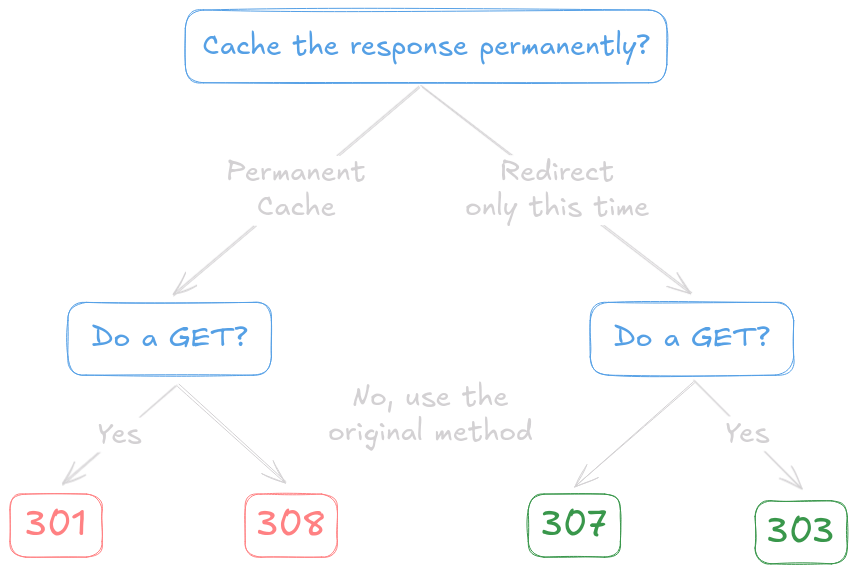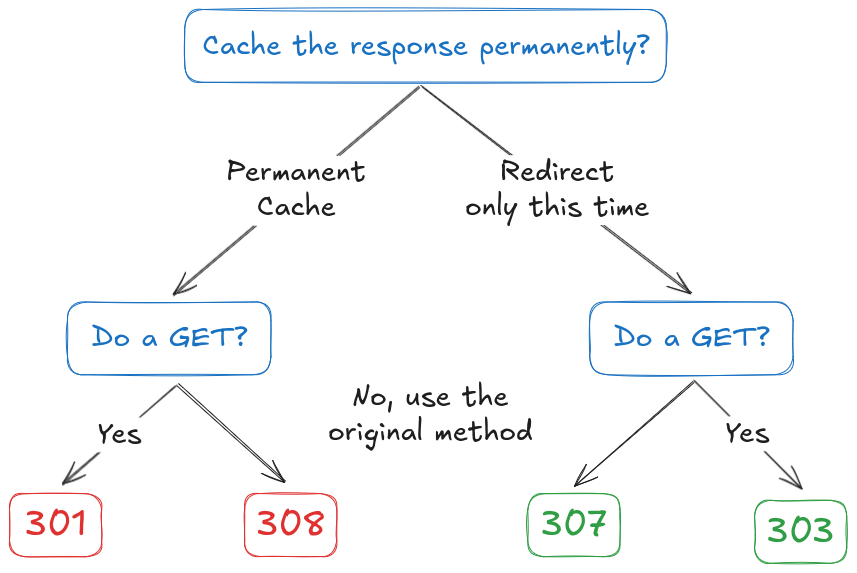

301: Permanent redirect
The URL is old, and should be replaced. Browsers will cache this, the method will change to GET, as per RFC 7231:
For historical reasons, a user agent MAY change the request method from POST to GET for the subsequent requests.
Example: URL move from /register-form.html to signup-form.html.
302: Temporary redirect
Only use for HTTP/1.0 clients. This status code should not change the method, but browsers did it anyway. The RFC says:
Many pre-HTTP/1.1 user agents do not understand [303]. When interoperability which such clients is a concern, the 302 status code may be used instead, since most user agents react to a 302 response as described here for 303.
Of course, some clients may implement it according to the spec, so if interoperability with such ancient clients is not a real concern, 303 is better for consistent results.
303: Temporary redirect (change method)
The 303 status code is a temporary redirect that changes the method to GET.
Example: If the browser send a request to POST /register.php, then now load GET /signup.php
307: Temporary redirect (keep method)
The 307 status code is a temporary redirect that keeps the original status code, repeating requets identically.
Example: If the browsers sent a POST /register.php request, then this tells it to redo the POST /signup.php.
308: Parmanent redirect (keep method)
Where 307 is the "no method change" counterpart of 303, this 308 status code is the "no method change" counterpart of 301.
Refs: